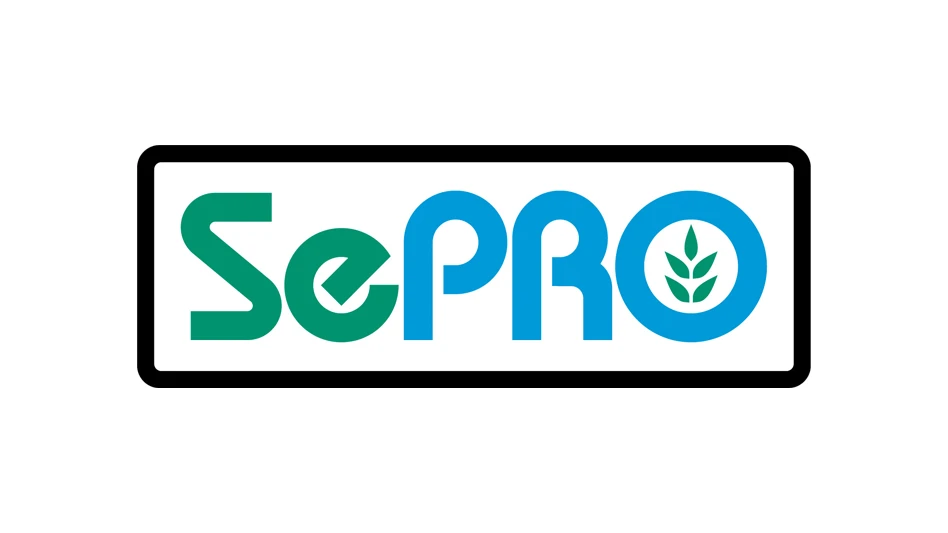 Despite the lack of a full economic or industry recovery, U.S. golf courses have not been content to sit idle.
Despite the lack of a full economic or industry recovery, U.S. golf courses have not been content to sit idle.
Courses have been active, engaging in any number of construction and renovation projects during the last three years, including tee and green projects as well as correcting drainage and irrigation issues. Industry experts point out that many of these often small-scale projects – outside of costly major renovations or rebuilds – stem from reasons that don’t necessarily follow a course’s master plan.
In August, GCI, via the online service SurveyMonkey, asked its readers about the types of recent construction and renovation projects taking place at their facilities and how those compared to those from three years ago. The data was broken down and analyzed to track trends and make correlations between all respondents, public (46 percent of respondents) and private (54 percent of respondents) courses.
Compared to three years ago, 38 percent of public and private courses report an increase in spending on renovation and construction projects in 2012. And while nearly half (46 percent) of public and private golf courses reported their 2012 capital spending budget remained static, nearly a third (32 percent) reported a boost in their funding, according to GCI research data. Courses reported, on average, earmarking around 20 percent of their overall 2012 capital spending budget for construction and renovation projects.
To add some context, the average capital budget in 2012 was $160,724 with around 15 percent ($25,000) allocated to renovation and construction projects, according to GCI’s 2012 State of the Industry research. In comparison, equipment purchases made up 55 percent of 2012 capital spending, major irrigation upgrades made up 6 percent and infrastructure and building projects made up 5 percent, with “Other” projects – for example, tree removal, flood remediation, driving range projects, clubhouse landscaping and pond maintenance – making up the remaining 16 percent of capital spending, according to the research.
|
In-house advantage Just slightly more than half (53 percent) of golf course facilities responded they planned to do any renovation or construction work using in–house labor and expertise ( see “Doing the work,” below), according to GCI research. However, 63 percent of public courses were more apt to do the work in-house, while 62 percent of private courses indicated they would hire a builder/contractor to do the work. Whether to hire an outside firm or do the work in-house is an age-old question that will probably never have a definitive answer, says Justin Apel, executive director of the Golf Course Builders Association of America (GCBAA). “It is short-sighted to say there’s one correct answer,” he says. “We see clubs that have enough staff and in the off-season will have them involved in small construction projects to keep them busy.” He has also seen instances of construction projects bid with the caveat that the maintenance staff be utilized by the contractor to defray some of the costs. The bottom line is whether the existing personnel can handle the work without other areas of the course suffering. “Taking ownership in your project and using your staff’s talent and the facility’s equipment is an opportunity for costs savings,” he says. “However, you need to plan what component of the project you have the time and expertise to complete, and what component is better off left for a professional golf course builder. “I’ve heard countless successful projects where the course staff prepared the project area or are on hand to assist with the labor aspect of a project,” he adds. “A combination contracted and DIY project can be a win-win and ensures a successful result to any course project.” |
From this data, GCI extrapolates that there’s a latent market of more than $200 million for renovation, construction and remodeling projects in the U.S. golf market.
GolfScapes architect and GCI columnist Jeffrey Brauer says the research parallels the trends he’s experiencing and observing in the market, everything from full renovations to “cosmetic”-type improvement projects. However, he adds that in the current economic climate few courses are sold on the lasting impact a full-renovation project. According to GCI research, fewer than 10 percent of courses were engaged in any type of large-scale renovation.
“I am not sure that a full renovation pays back in this market,” Brauer says. “Whereas 10 years ago, you could spend $5 million to $8 million (on a large-scale renovation project) and get it back in increased play.
“The days of a nearly open checkbook are gone,” Brauer adds. “Although, there are some stories among architects that the ultra-wealthy clubs were never really hurt by the downturn.”
Regardless of economic trends, weather and precipitation anomalies, or the number our rounds being played during the season, a golf course’s infrastructure continues to age and at some point needs to be addressed if the course’s leadership intends to have a viable facility, says Justin Apel, executive director of the Golf Course Builders Association of America (GCBAA). Courses addressing these upgrades has played a major factor in the recent uptick in construction work, he says.
“Many of these upgrades have been put off as long as possible,” Apel says. “The competition for play and retraining memberships has been a driving factor on several projects that have come across our desk.”
So how are courses investing the money they have to spend? Bob Lohmann, ASGCA, Lohmann Golf Designs, Marengo, Ill., and a frequent GCI contributor, has seen very little consistency in the types of projects his firm has engaged in the last year.
“It’s kind of all over the board,” Lohmann says. “In the last six months – and really the past couple of months – we have been getting calls asking us to assist in small, spur-of-the-moment maintenance projects such as rebuilding a tee complex, replacing grass in a green-surround or rebuilding a couple of bunkers. These types of projects are $50,000 to $75,000 expenditures and usually address a ‘pet’ project of a superintendent or a greens committee and a realization from supers that they have the money in the budget to cover it.”
According to GCI research, the most popular projects du jour are bunker and tee box construction and renovation and drainage projects. These trends remain consistent across both private and public, with the exception of an emphasis on irrigation system upgrades with private courses and cart path projects with public courses (see “Dig in,” below).
“Cost-reduction projects remain about the same as three years ago, with bunkers leading the way,” Brauer says. “At the same time, there is a small uptick on image-changing renovations, but they work hard to target spending to as little as possible to achieve the results.”
Irrigation and drainage projects have been popular because these projects typically are the most needed with courses trying to determine better ways to manage their water, Brauer says.
On the other side, courses report little interest in devoting money to maintenance facilities or other allied buildings. Likewise, courses report very little support for “environmental” additions or upgrades, such as installing an equipment rinse/wash pad. Apel speculates that the actual investment into “environmental” additions might be more frequent, but that these projects are actually a portion of another project, or that they were pre-existing improvements made outside the scope of GCI’s research. For example, a new maintenance facility built five years ago had “environmental” components as part of its overall design. The research only takes into account projects over the last three years.
|
Doing the work Respondents were split nearly evenly between whether they would do construction and/or renovation work or hire out to an outside firm. The data indicates the majority of private facilities (63 percent) would hire a contractor while more than half (63 percent) of public courses would opt to do the work in-house. However, if contracting out the work, more than three quarters of respondents (77 percent) indicated they would hire a builder certified by the Golf Course Builders Association of America. However, private courses were more likely to choose a GCBAA-certified contractor than a public course, according to the data.
|
Public vs. Private. So how do these trends break down between public and private courses?
Compared to 2011 spending, 37 percent of private course and 29 percent of public courses reported spending more in 2012 on renovation and construction projects. Likewise, this same trend is observed when compared to spending three years ago, with 40 percent of private courses and 30 percent of public course reporting an increase in spending. Altogether, these project investments represent, on average, about a quarter (24 percent) of a private club’s and 16 percent of a public club’s overall capital spending budget.
In general, public courses are investing in bunker projects because bunkers tend to get the least attention at these facilities, Lohmann says, especially those courses with minimal maintenance budgets. Private courses will maintain bunkers better than public courses, he adds, often because membership demands it.
“At public facilities, where money is tighter, bunker maintenance tends to take a back seat to greens and tees,” he says. “You send one guy on a sand rake to whip around the bunkers a couple times a week. It doesn’t take long for neglected bunkers to become bigger maintenance problems.
“And when you get things like storm damage and erosion it can often take longer for these issues to get fixed than at a private course where there is more member/player scrutiny,” Lohmann adds.
|
Spending Around a third (38 percent) of golf course facilities were spending more money in 2012 on renovation and construction projects than they did a year ago and three years ago. Not surprising, private facilities were investing more frequently than public courses during those time periods, according to GCI research. However, three years ago, nearly half (40 percent) of private facilities cut these budgets compared to 21 percent of public courses. On average, courses are earmarking around 20 percent of their overall capital spending budget for construction and renovation projects, with private courses spending more (24 percent) and public courses spending less (16 percent).
|
Ignoring the master plan. Master plans drive some, but not all of the recent construction and renovation projects taking place on courses.
In fact, the research indicated that about a third of the time did any of the recent construction or renovation projects coincide with the scope and/or direction of the facility’s master plan.
The trend with courses is to focus on smaller projects and not comprehensive master planning.
Instead of master plans, Lohmann’s firm has been doing more smaller “asset-management plans” which are more about identifying future maintenance concerns or small cosmetic changes that can be completed in-house and stretch the dollars and cents of small investments.
“Clubs are still wary of making big investments in an economic climate that remains iffy,” Lohmann says. “Long-range plans generally center around large-scale investment projects. “
And small, spur-of-the-moment projects might be an indication that clubs are starting to have some extra money to slowly start reinvesting. “But it is taking baby steps... and they want to get all they can out of that money, hence the reluctance to invest in planning,” Lohmann says.
Apel speculates that this trend of moving away from master plans may be the result of the “squeaking-wheel syndrome.”
“Greens/construction committees change and many times we find there might be a pet peeve from that new chairman and that this is the project regardless of what the master plan has indicated,” he says. “But there are times when this backfires and that new irrigation systrem that was just installed falls victim to a greens renovation and has to again be addressed.”
Brauer wonders if a lack of understanding accounts for the trend to deviate from a master plan and focus on smaller projects.
“Some members just cannot think long-term,” he says. “If you find a solution to this problem, I’m all ears.”
|
Dig in -- The public-private breakdown Bunker work is the most popular type of construction projects taking place on golf courses, followed closely behind by work on tee boxes and drainage improvements. Aside from complete course renovation and reconstruction, which only 8 percent of respondents indicated they were undertaking, the least popular projects involved regrassing, clearing, earth-moving and grading work. When examining the project private and public courses were engaged in, more than half of private courses (56 percent) gave drainage work a top priority, followed by bunker and tee box renovation and construction (47 percent), but also including with nearly the same frequency (42 percent) irrigation system upgrades. Similarly, public facilities placed a priority on bunker (47 percent) and tee box (46 percent) work, followed by drainage improvements and cart path projects (40 percent). It’s interesting to note that only about a third of these projects are part of a course’s master plan.
|
Mike Zawacki is editor of GCI.

Explore the October 2012 Issue
Check out more from this issue and find your next story to read.
Latest from Golf Course Industry
- Atlanta Athletic Club approves funding for master plan
- Maximizing Cultural Practices and Agronomic Benefits with Minimal Surface Disruption
- Real Answers about Spray Nozzle Choices
- From the Course to the Factory: How Customer Insights Drive Innovation
- New & Proven Enzyme Strategies for Sprayable Thatch Management
- Innovating Tomorrow: Wittek’s New Products & Industry Staples
- PBI-Gordon introduces new field development team
- The Cabot Collection announces move into course management









